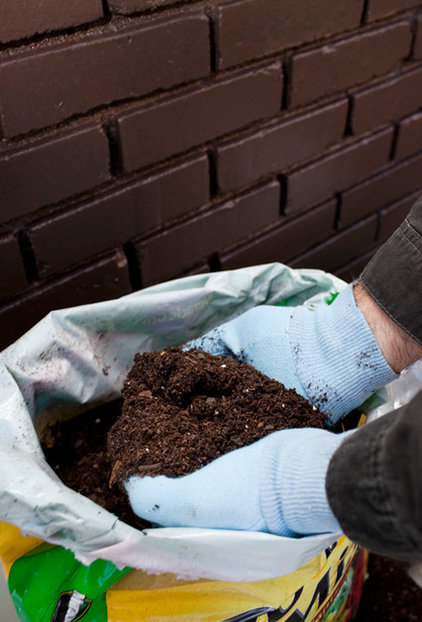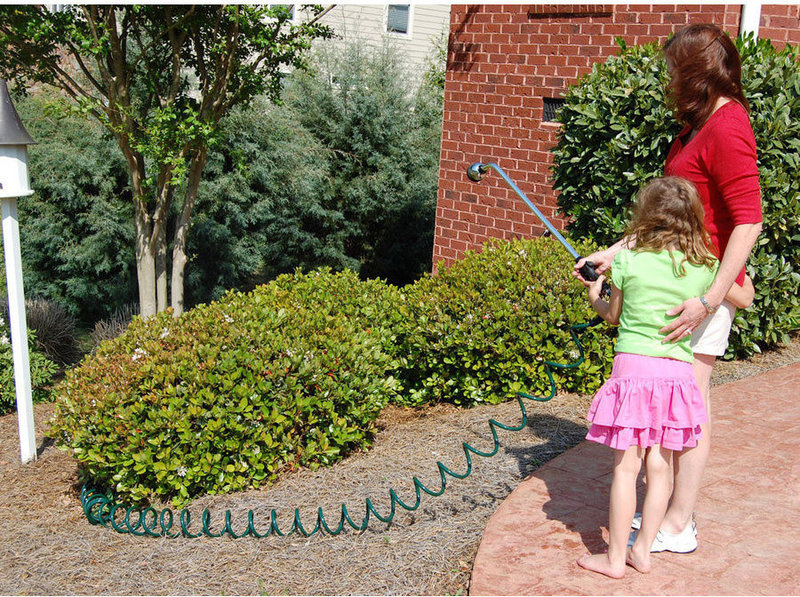 R.A. Praught
1. Every tree needs a mulch ring in Gainesville Lawns. I hear this one a lot from my clients. They seem surprised when I don't create a ring around each tree, with mulch piled high around the base. Mulch rings are used to protect the tree from string trimmers when it's young, as well as to hold in precious moisture around the tree roots — right? Well, that's the historical reason.
R.A. Praught
1. Every tree needs a mulch ring in Gainesville Lawns. I hear this one a lot from my clients. They seem surprised when I don't create a ring around each tree, with mulch piled high around the base. Mulch rings are used to protect the tree from string trimmers when it's young, as well as to hold in precious moisture around the tree roots — right? Well, that's the historical reason. In fact, mulch rings, aside from being unattractive, can create more issues than they are rumored to solve. Most of the tree roots grow out well beyond the tree's drip line, so piling mulch 2 feet around the trunk will not do much to conserve water where the tree actually needs it. And string trimmers? It's not that difficult for a Professional Gainesville Lawn Maintenance Company to carefully trim or mow around a tree, avoiding damage to the tree. If you're the one mowing or trimming, simply be careful, and if you employ a Gainesville lawn crew, explain what you want and how you want it done.
 decordemon
2. Soil is soil. No, no, no! This is a very bad myth, and one that should be dispelled immediately. All soils are not created equal, and if you use the wrong soil for your plants, you'll create an inhospitable environment for them from the get-go.
decordemon
2. Soil is soil. No, no, no! This is a very bad myth, and one that should be dispelled immediately. All soils are not created equal, and if you use the wrong soil for your plants, you'll create an inhospitable environment for them from the get-go. The first rule of thumb is to never use soil dug up from the ground for your inside houseplants — that type of soil will never drain the correct way for interior plants. Next, if you have specialty plants, such as orchids, cacti or palms, know that each one of these needs a different kind of soil to thrive.
When purchasing plants, ask the garden center staff what type of soil that plant needs, and then make sure to group plants with like needs together in your garden. Plants like cacti and succulents need well-drained loose soil; hostas and impatiens need soil that holds a bit of water (not soggy, though); hydrangeas and azaleas prefer soil that is on the acidic side.
 Garden Pacific
3. I don't have a green thumb. All this really means is that you probably don't understand what a plant needs, starting with the soil. In general, plants need a certain amount of sunlight per day and water per week, and the proper soil.
Garden Pacific
3. I don't have a green thumb. All this really means is that you probably don't understand what a plant needs, starting with the soil. In general, plants need a certain amount of sunlight per day and water per week, and the proper soil. Start with some easy-care plants in small numbers, and get to know those plants' requirements well before adding to your collection. Easy-care plants will give you a sense of accomplishment, boosting your confidence to try more. For indoor plants start with pothos or sansevieria, and for outside plants, consider Knock Out roses, cacti or evergreens likeboxwood.
 4. You have to stake trees. It depends, but in general, no. If you are planting a young tree in a highly windy area or on a slope in a Gainesville Landscape, go ahead and loosely stake the tree to keep it from falling over as it gets established. Otherwise let the tree go it alone. Light breezes make the tree sway slightly from side to side, allowing the tree's roots to grow deeper to stabilize it. If you need to stake it, remember to remove the stakes after the first growing season. It's a little tough love, but your tree will thank you later.
4. You have to stake trees. It depends, but in general, no. If you are planting a young tree in a highly windy area or on a slope in a Gainesville Landscape, go ahead and loosely stake the tree to keep it from falling over as it gets established. Otherwise let the tree go it alone. Light breezes make the tree sway slightly from side to side, allowing the tree's roots to grow deeper to stabilize it. If you need to stake it, remember to remove the stakes after the first growing season. It's a little tough love, but your tree will thank you later.
 Jackson and Perkins
5. If a plant is wilted, it needs water. Not necessarily. On hot days think of a wilted plant much the same as a panting dog. It's the plant's way of saying, "Whew, it sure is hot out here." If you notice a plant wilting one afternoon, check it again the next morning. If it's still wilted in the cooler morning hours, go ahead and water it. And remember, use Gainesville Irrigation to water more deeply and less often, directing the water down by the base of the plant rather than to the plant's leaves. Deep watering will encourage deeper roots, leading to a healthier, more drought-tolerant Gainesville landscape.
Jackson and Perkins
5. If a plant is wilted, it needs water. Not necessarily. On hot days think of a wilted plant much the same as a panting dog. It's the plant's way of saying, "Whew, it sure is hot out here." If you notice a plant wilting one afternoon, check it again the next morning. If it's still wilted in the cooler morning hours, go ahead and water it. And remember, use Gainesville Irrigation to water more deeply and less often, directing the water down by the base of the plant rather than to the plant's leaves. Deep watering will encourage deeper roots, leading to a healthier, more drought-tolerant Gainesville landscape.
 Jocelyn H. Chilvers
6. If a little Gainesville lawn fertilizer is good, then a lot of fertilizer is better. Big mistake. Always read the package directions when using any Gainesville fertilization program, as overapplying can lead to a number of plant health issues. Some plants, like morning glories, will develop lush foliage but few flowers if overfertilized. Even worse, too much fertilizer can increase salt in the soil to unhealthy levels, stunting growth or burning the roots.
Jocelyn H. Chilvers
6. If a little Gainesville lawn fertilizer is good, then a lot of fertilizer is better. Big mistake. Always read the package directions when using any Gainesville fertilization program, as overapplying can lead to a number of plant health issues. Some plants, like morning glories, will develop lush foliage but few flowers if overfertilized. Even worse, too much fertilizer can increase salt in the soil to unhealthy levels, stunting growth or burning the roots. Use the recommended amount of fertilizer and fertilize on the recommended schedule (once a week or once a month, for example). To contact a professional Gainesville lawn pest control company, call 378-5296 for a program to make sure your plants thrive.
 Margie Grace - Grace Design Associates
7. Xeric landscape plants don't need water. A variation of this is, "I want a no-maintenance garden." Here's the truth: Even xeric and native plants need water, and there is no such thing as a no-maintenance xeric landscape. Plants are living things, and even if a plant such as an agave requires much less water than, say, impatiens, it still needs water, particularly in the first weeks after planting or during an extended drought. So if you're a person who doesn't want to be a slave to your garden, alter your thinking from "no maintenance" to "low maintenance."
Margie Grace - Grace Design Associates
7. Xeric landscape plants don't need water. A variation of this is, "I want a no-maintenance garden." Here's the truth: Even xeric and native plants need water, and there is no such thing as a no-maintenance xeric landscape. Plants are living things, and even if a plant such as an agave requires much less water than, say, impatiens, it still needs water, particularly in the first weeks after planting or during an extended drought. So if you're a person who doesn't want to be a slave to your garden, alter your thinking from "no maintenance" to "low maintenance."
